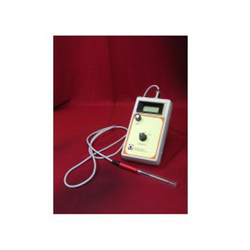Gauss Meters
A Gauss meter is an instrument that measures magnetic field intensity. Electromagnetic fields can be found in numerous locations in the modern world. Electrical wiring in the home, power transmission lines, and household electronics such as televisions, computers, appliances, and clock radios create them.
What is an Electromagnetic Field?
An electromagnetic field is an invisible line of force created from alternating current flow through appliances or electrical lines. It surrounds all electronic devices. The U.S. Environmental Protection Agency (EPA), through the examination of existing studies, has found that over-exposure to electromagnetic fields can increase the possibility of cancer in those exposed to them. As a result, more people are using Gauss Meters to help determine what the safe distance from electrical wiring or electronic devices is in the home. Not all devices emit harmful levels of these fields. However, when a device is close to a power transformer or concentration of electrical wiring, it is something to consider.
How Do Gauss Meters Work?
A Gauss meter is also known as an EMF detector. They are used to measure the presence of electromagnetic energy and the level of emissions from wiring or devices in a given area. A Gauss meter can also help determine what areas in a home already have high radiation levels.
What Exactly is a Gauss Meter?
EMF Detectors are also known as Gauss meters. The meters are used to detect the presence of electro-magnetic energy in the atmosphere and can be used to detect emissions from specific devices or areas. Conducting regular surveys with a Gauss meter can help business and home owners make sure that the emission levels do not become harmful to people. When conducting an area survey, ensure that all areas known to contain concentrations of electrical wiring, transformers, and electronic equipment are measured and that quick surveys of other parts of the structure are done.
What Are Some Additional Uses of the Gauss Meter/EMF Detector?
Gauss meters can help people determine appropriate areas to place furniture, away from known hot spots. They can also be used to determine the distance that should be maintained between a home entertainment center and children, identify appliances that have high emission rates, improve WiFi reception by identifying known areas of interference, and determine whether a new home is too close to power lines before someone purchases it. Most studies have shown that exposure should be limited to no more than 2.5 milli-Gauss in the 50-60 HZ frequency range.


Comments - No Responses to “Gauss Meters”
Sorry but comments are closed at this time.